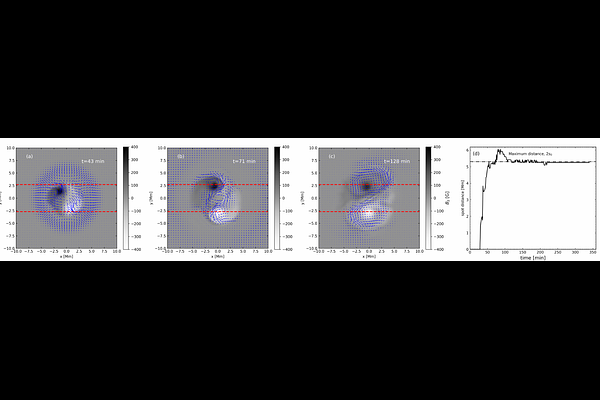Recurrent eruptions from the emergence of a toroidal flux tube

Recurrent eruptions from the emergence of a toroidal flux tube
J. Zhuleku, V. Archontis, K. Moraitis
AbstractSolar eruptive behavior is often modeled with magnetohydrodynamic simulations of magnetic flux emergence. The usual geometry considered is that of a horizontal cylindrical magnetic flux tube. An alternative is the toroidal tube geometry which has some advantages over the cylindrical one, namely, that the emerging bipolar pair of sunspots do not drift apart indefinitely. In addition to the toroidal tube, we include an oblique, ambient field in the simulation, which leads to the production of increased activity from the interaction of ambient and emerging fields. Letting the simulation run for a long time reveals that six eruptive jets take place after an initial reconnection jet. In an attempt to better understand the eruptive activity we examine the evolution of free energy and relative helicity of the coronal volume, as well as, the magnetic tension forces acting on the magnetic system. We find that all quantities decrease in magnitude during the eruptive jets and rebuild afterwards. This recurrent activity continues even after flux emergence ceases and stops once the examined quantities saturate to nearly constant values.